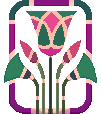
Sunday, October 12, 2014
"Set at Thutmose III's Heb Sed - Translated Glyphs"
7:37pm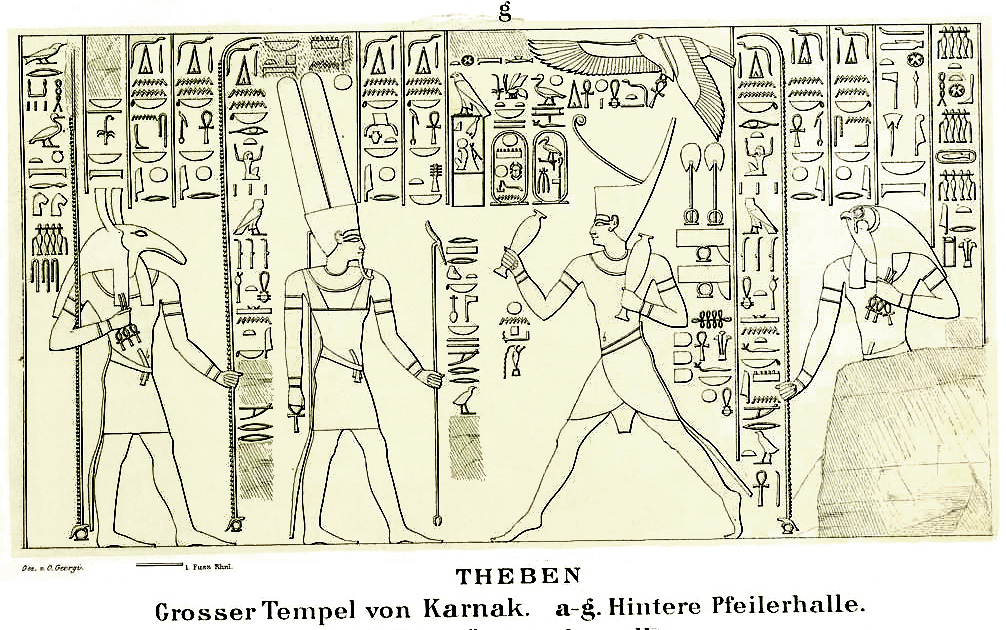
Many of the ancient monuments left out in the (acid) rain have undergone much damage through the centuries. But thanks to the careful records of Lepsius, we have knowledge of what they looked like in better days. Thus it is with Thutmose III's Heb Sed Scene at Karnak. In the larger scene, we see Set at far left, and in front of him is Amun Ra. Then Thutmose III is making his race, carrying heset jars in his hands. Behind Thutmose is one of the Herus.
I was able to work out translations of some of the hieroglyphs:
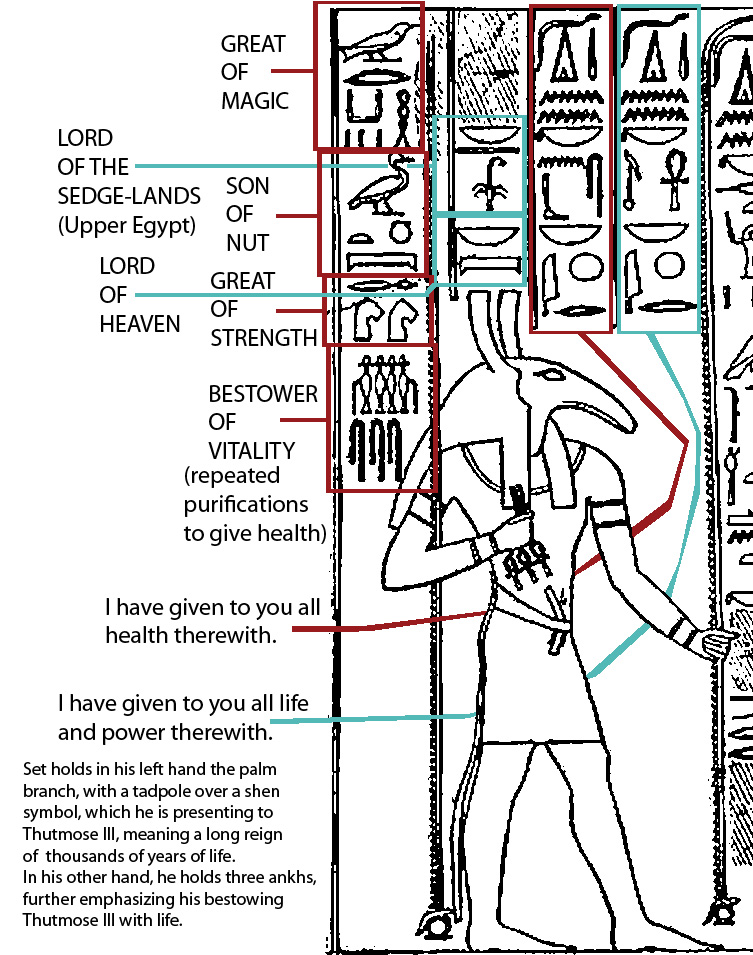
Heru (Horus) is repeating some of the same gifts as Set. Closer to the center (to Thutmose III), we read, ""I have given to you all life and power therewith." Above his beak, we read, "I have given to you all health therewith." Then after that, among those glyphs are descriptions, "Great God, many-colored of plumage (a reference to Horus as a falcon), and "Lord of Heaven".
Amun Ra is also offering power and life. In addition, he's offering stability (djed). There's still more hieroglyphs to decipher. (I have a pdf of this image of Set and the translated glyphs.)

Saturday, October 18, 2014
"Idea for a Statue of Hathor"
11:07pm
I woke afterwards, and remembered the statue as the one at the Luxor museum:
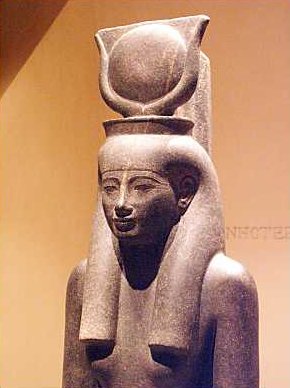
Wikipedia photo by Agon S. Buchholz
This dream has inspired me. I sought out various photos of this statue from different angles, and decided what I like best about it is its face. The body seems a little too thin, and the details are extremely simple, as there's no indication of her dress lines. So I took a photo I'd taken of a statue of Sekhmet that's at the Met museum, and flipped it horizontally so that the ankh was in her right hand as it is in the Luxor statue. Luckily, the head of the Luxor statue could be placed over the head of the Met statue to make a model.
I enlarged this model so I could trace more easily:
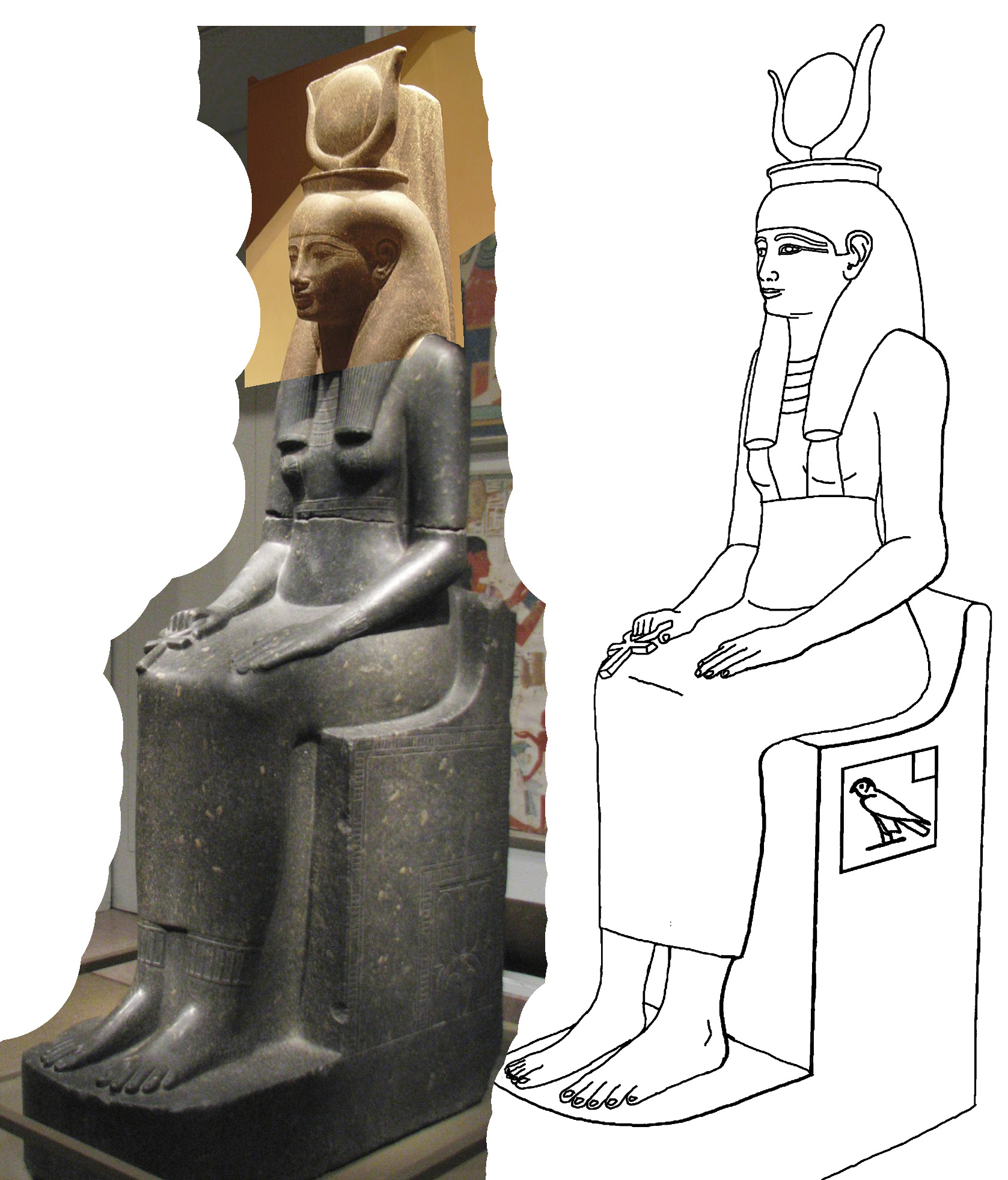

Sunday, October 19, 2014
"Colorful Hathor"
6:40pm
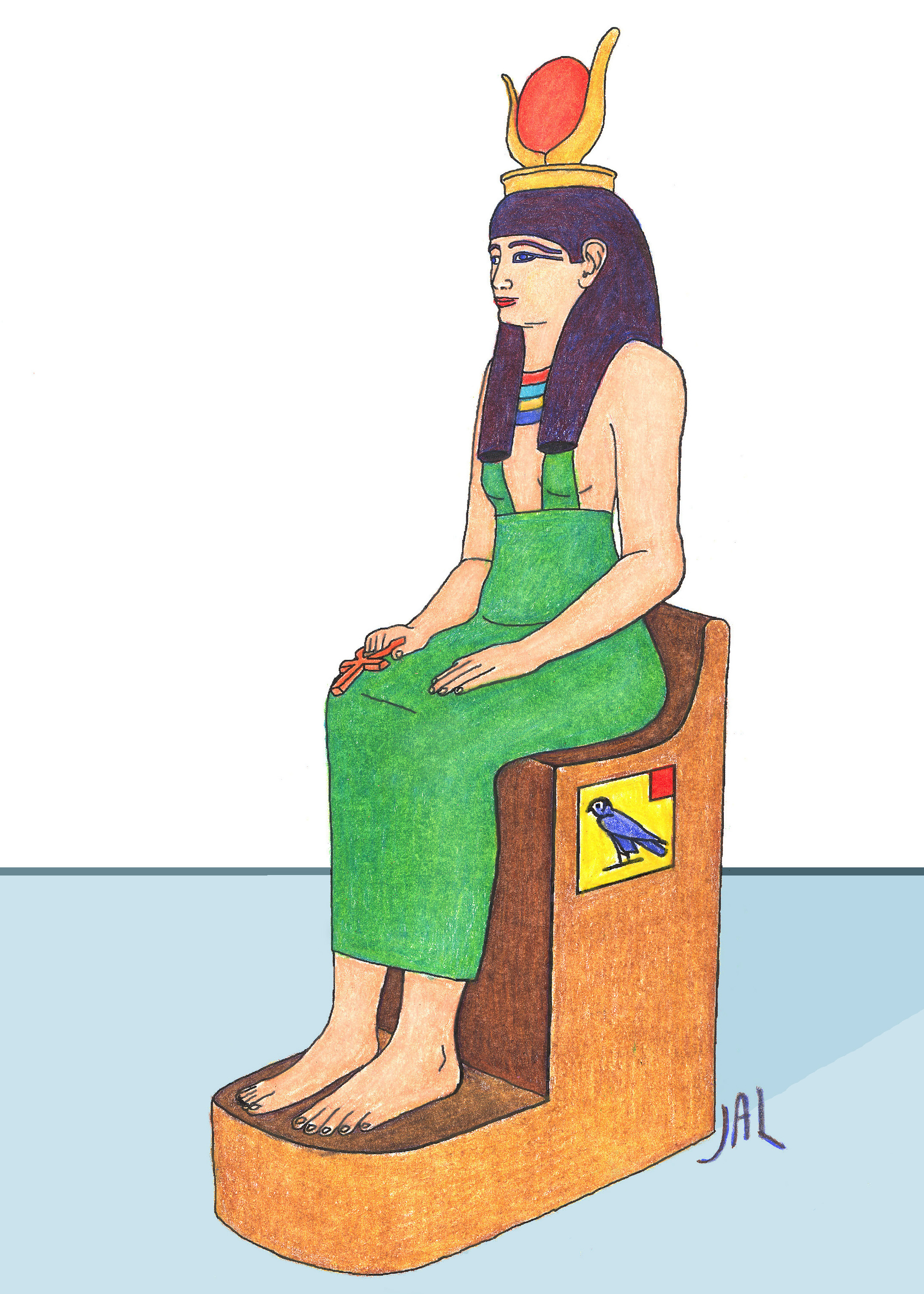

Saturday, October 25, 2014
"Connections between Set and Hathor"
3:57pm
After describing some Old Kingdom finds, Petrie speaks of "the far later limestone stela of Set and Hathor (XLIII). The heads are covered with gold leaf, put on carelessly, and spreading irregularly 1/4 inch beyond the outline." (_Naqada and Ballas_, page 5)
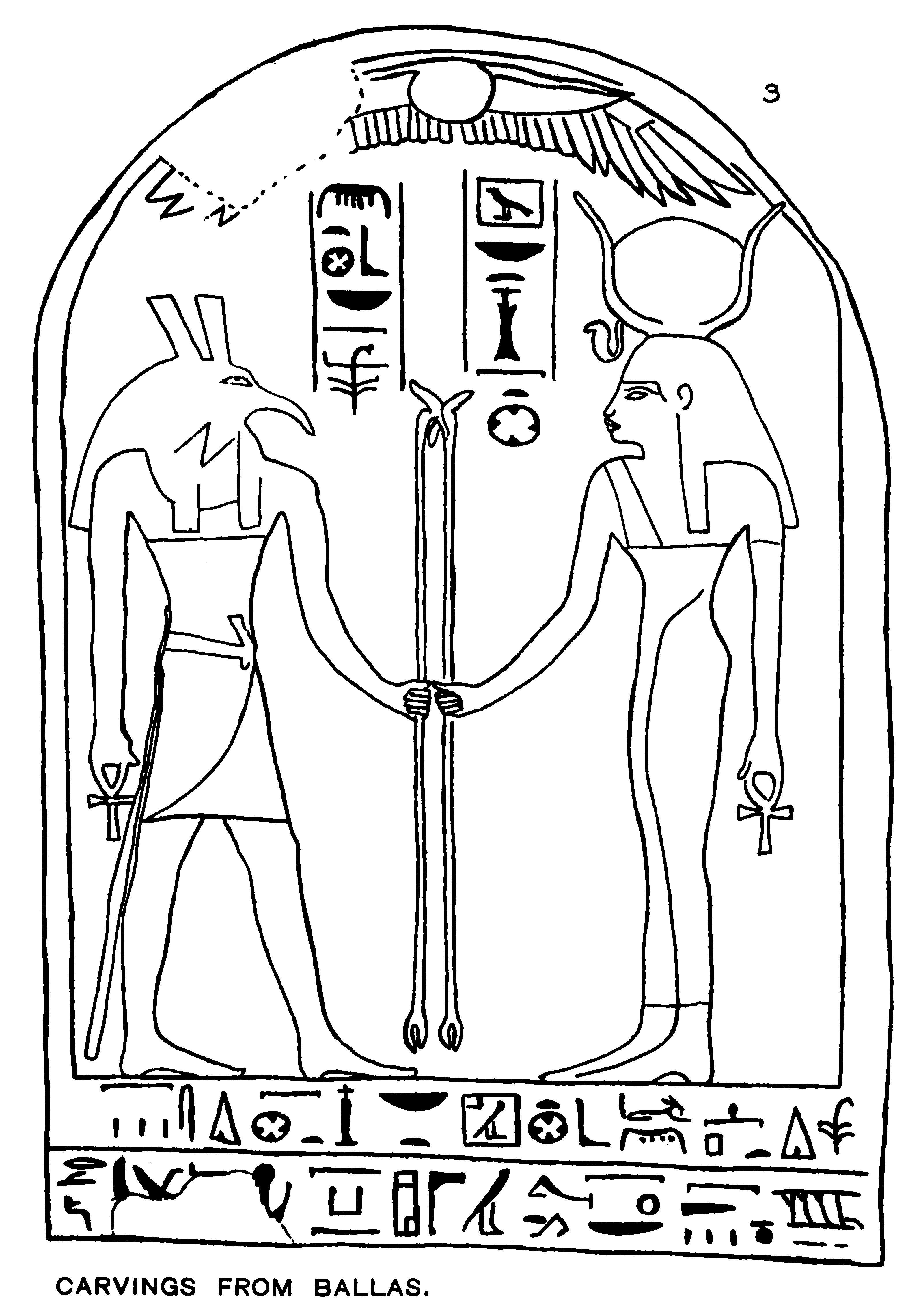
Petrie's illustration of the stele
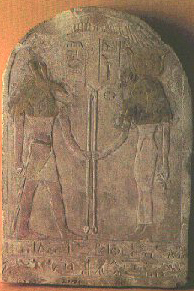
"Seth and Hathor, the well-known goddess of drunkenness and love, were tutelar god and goddess of wine." (_Seth, God of Confusion_, by Te Velde, page 7)
There's further connections between Set and Hathor. "The function of Seth as lord of foreign countries may be as old as the myth of the conflict and reconciliation of Horus and Seth." But also the "Egyptian Hathor was brought into relation with foreign countries. She is 'mistress of Byblos', and since the M.K. was worshipped abroad in a temple on the Sinai. Hathor acquired this function in the time of the Sesostris kings. The name Sesostris means son of Wosret. This goddess is supposed to have been a local, Theban form of Hathor. The close link between Hathor or Wosret and the king of the 12th dynasty would have resulted in her becoming tutelar deity of the state expeditions to the Sinai, so that she was worshipped abroad." (_Seth, God of Confusion_, page 110)
"In addition to her purely Egyptian roles, Hathor was also made a goddess of foreign lands as far apart as Byblos in the Lebanon in the north and Punt (probably northern Eritrea) in the south. " (_Complete Gods and Goddesses_, by Richard Wilkinson, page 143)
There's even more connections with Set. The color red is associated with Set. "Those with auburn hair, and animals with red fur, were considered to have an affinity with Seth." (_Ramesses: Egypt's Greatest Pharaoh_, by Joyce Tyldesley)
"To our great surprise, when the mummy of Ramses was brought to Paris to halt its disintegration due to a harmful fungus then not yet identified, several specialists of the capillary system who studied the skull before its exposure to gamma rays discovered that the roots of the pharaoh's hair were unquestionably red. One may then legitimately wonder if this feature of Ramses ll, and probably of his immediate ancestors, did not influence their attitude towards the god Seth on which "red forms" depended ..." (_The Great Pharaoh Ramses II and his Time: an Exhibition of Antiquities from the Egyptian Museum, Cairo, Palais de la Civilisation, Montréal, June 1-September 29, 1985_, by Mathaf al-Misri, Christiane Desroches-Noblecourt, Palais de la civilisation (Montreal, Quebec) Ville de Montreal, 1985)
But not only Set is associated with red and red hair. One of the "Seven Hathors" is named "Red-hair", and another is named "Bright red". (_The Routledge Dictionary of Egyptian Gods and Goddesses_, by George Hart, page 64)
(All of which tickles me, because although it's somewhat faded now, I was born with very red hair!)